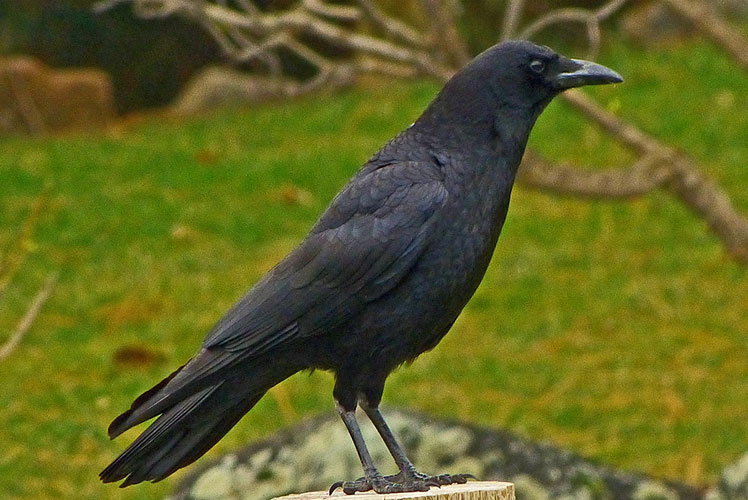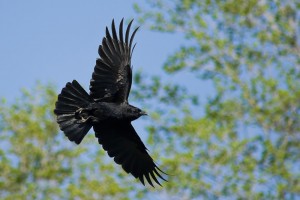
Corvus brachyrhynchos
SUBFAMILY
Corvinae
TAXONOMY
Corvus brachyrhynchos Brehm, 1822, Boston, Massachusetts.
Four subspecies.
OTHER COMMON NAMES
English: Common crow; French: Corneille d’Amйrique; German:
Amerikanerkrдhe; Spanish: Cuervo Americano.
PHYSICAL CHARACTERISTICS
15.21–19.11 in (39–49 cm); male 1 lb (458 g), female 15.33 oz
(438 g). Plumage is entirely black with a light violet-blue gloss.
Wings have a more greenish blue gloss. Prominent bristles
cover the basal third of the upper mandible. Bill, legs, and feet
are black.
DISTRIBUTION
Widespread throughout North America. Canadian birds migrate
to central United States and Atlantic seaboard.
HABITAT
Adapted to most habitats with the exception of arid areas and
dense forest.
BEHAVIOR
Gathers in huge communal roosts in winter, sometimes containing
tens of thousands of birds. Individuals will fly up to 50
mi (80 km) to the roost.
FEEDING ECOLOGY AND DIET
Omnivorous. Main food items include insects, bird nestlings
and eggs, and carrion.
REPRODUCTIVE BIOLOGY
Solitary nester. Builds stick nest in fork of tree, bush, or occasionally
artificial structure. Generally lays four to five eggs in
cup made of roots, grass, and animal hair February through
June. Incubation 18 days; fledging 28–35 days.
CONSERVATION STATUS
Not threatened. Abundant throughout its range.
SIGNIFICANCE TO HUMANS
Heavily persecuted as an agricultural pest, largely because its
diet includes grain, game birds, and poultry.
Photo Gallery of - American crow




 Animalia Life
Animalia Life